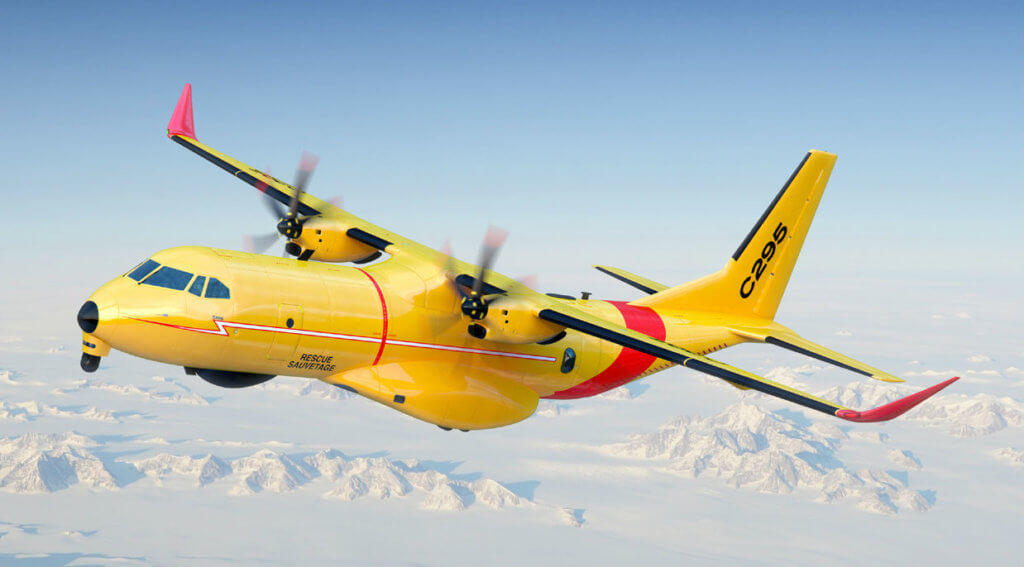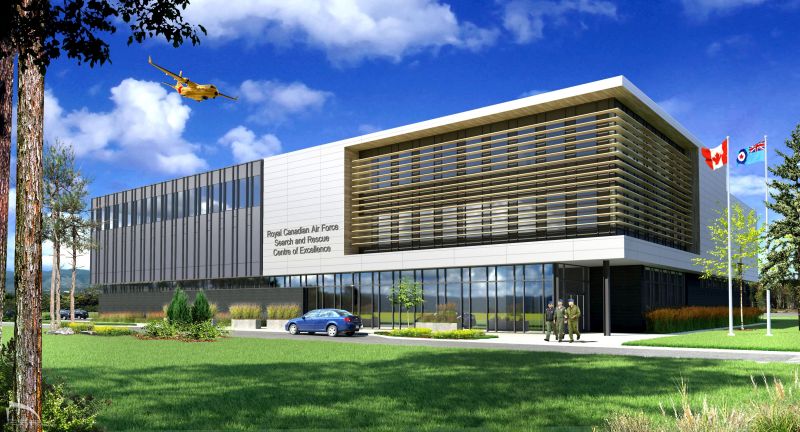Estimated reading time 5 minutes, 39 seconds.
The in-service support and training systems team behind Canada’s new fixed-wing search and rescue (FWSAR) aircraft expects to begin construction on a training centre at 19 Wing Comox, B.C., before the end of the year.
Eva Martinez, PAL Aerospace vice president of in-service support, said the first shovel should break ground in December. “We’re working on finalizing that date,” she told the Best Defence Conference in London, Ont., on Nov. 1.

The Royal Canadian Air Force (RCAF) will take delivery of the first of 16 Airbus C295W search and rescue aircraft in April 2020 at a renewed main operating base at 19 Wing, scheduled to be stood up in December 2019.
Airbus was awarded a $2.4 billion contract in December 2016 to replace the RCAF’s fleet of six CC-115 Buffalos and several CC-130H Hercules assigned to search and rescue duty. The contract includes delivery of the aircraft, construction of a state-of-the-art training centre, and the first five years of maintenance and support. Options for an additional 15 years of maintenance and support services could extend the agreement to 2042 and the total value to $4.7 billion.
As part of the Airbus team, PAL Aerospace will provide program management services, in-service support (ISS), maintenance and logistics support, heavy maintenance, a mobile repair team, and manage a centralized supply chain.
The two companies have created a Canadian joint venture called AirPro to serve as the ISS integrator. And as a Tier 1 supplier to Airbus, PAL will provide direct maintenance, repair and overall (MRO) services as well as logistics and engineering augmentation.
While CAE Canada has responsibility for the training program, infrastructure and support, PAL has the task of creating a contractor field office and tool and parts warehouse and staffing an integrated team of aircraft maintenance engineers (AMEs) at the four main operating bases in Comox, Winnipeg, Trenton, Ont., and Greenwood, N.S.
It will also set up a central warehouse in Winnipeg to supply all four bases, alongside an MRO facility for heavy inspections and the mobile repair party. An interim warehouse will be created in St. John’s, N.L., until the Winnipeg facility is ready in December 2022.
“Next year, we begin the wave of hiring,” said Martinez, noting that AMEs, a senior maintenance manager and other personnel will all need to be in place as the facilities and services at each main operating base come online, starting with Comox and then likely Winnipeg, Trenton and Greenwood, “though that may change.”

The 16 C295W aircraft will likely be distributed three per base, with two marked for training and two to be rotated amongst the SAR squadrons to cover for aircraft undergoing maintenance, she said.
Although St. John’s-based PAL has been providing airline, aviation and manufacturing services since 1972, establishing a global reputation in the process, the FWSAR contract has helped put the company “on the map” in Canada, Martinez acknowledged.
As part of its central role in the program, PAL will be leaning on a wider supply chain of small and medium Canadian companies to achieve its industrial and technological benefits (ITB) obligations. “[We] will be expecting [our] suppliers to provide the support that we need so we too can meet our ITB and value proposition contractual commitments,” she said.
As one of the first large projects to move through the procurement process since the government in 2014 introduced a defence procurement strategy emphasizing value propositions (VP) to enhance economic returns, the “FWSAR contract is actually the first in Canada to fall under a measured VP,” Martinez noted. “In other words, [the VP] wasn’t just used for bid evaluation. A variety of tasks have already been pre-determined against which every Tier 1 will have to identify their labour hours specific to each of those tasks.”
While Airbus will have an obligation to invest at least 15 per cent of its ITB commitments in small and medium enterprises, PAL’s requirement is just 1.4 per cent. Martinez stressed, however, that the company would be looking well beyond that for additional Canadian content.
“That does not mean we are going to cap ourselves at 1.4 per cent. We have just as much interest [as Airbus] in working with small and medium enterprises where it makes sense in terms of performance,” she said.








